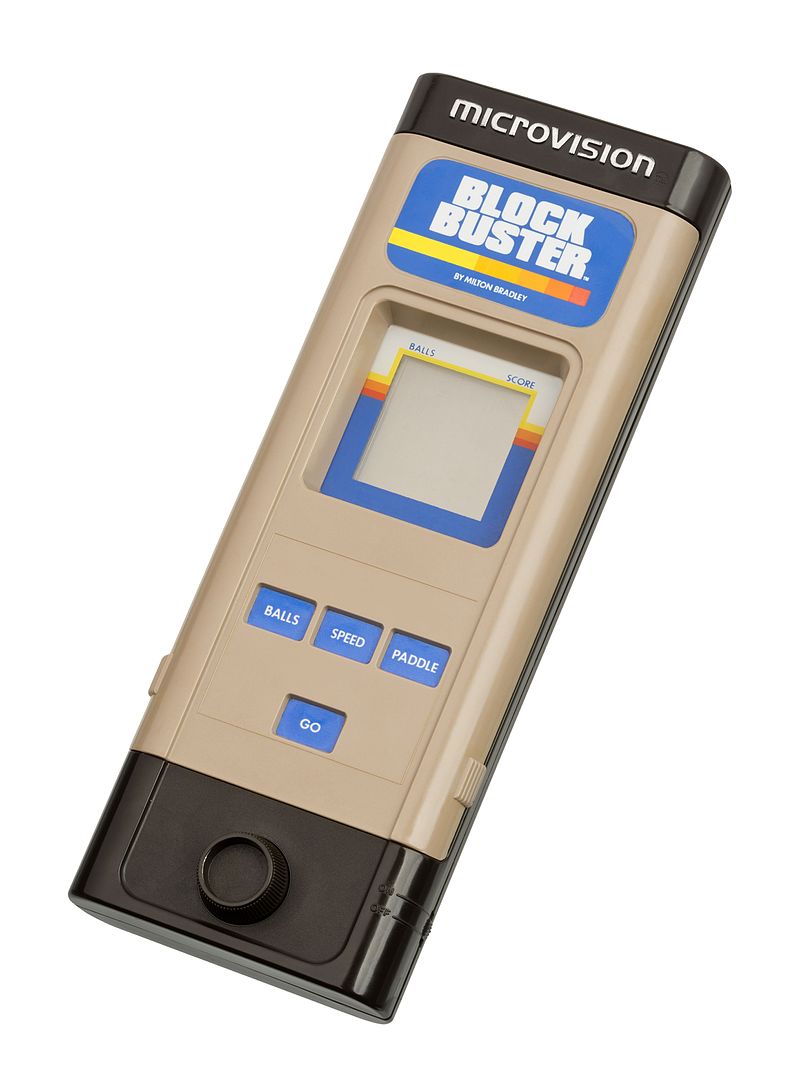-
1979 November
Hardware Description
The Microvision (aka Milton Bradley Microvision or MB Microvision) is the first handheld game console that used interchangeable cartridges and in that sense therefore is reprogrammable. It was released by the Milton Bradley Company in November 1979 for a retail price of $49.99.
The Microvision was designed by Jay Smith, the engineer who would later design the Vectrex gaming console. The Microvision's combination of portability and a cartridge-based system led to moderate success, with Smith Engineering grossing $15 million in the first year of the system's release. However, very few cartridges, a small screen, and a lack of support from established home video game companies led to its demise in 1981. According to Satoru Okada, the former head of Nintendo's R&D1 Department, the Microvision gave birth to the Game & Watch after Nintendo designed around Microvision's limitations.
Unlike most later consoles, the Microvision did not contain an onboard processor (CPU). Instead, each game included its own processor contained within the removable cartridge. This meant that the console itself effectively consisted of the controls, LCD panel and LCD controller.
The processors for the first Microvision cartridges were made with both Intel 8021 (cross licensed by Signetics) and Texas Instruments TMS1100 processors. Due to purchasing issues, Milton Bradley switched to using TMS1100 processors exclusively including reprogramming the games that were originally programmed for the 8021 processor. The TMS1100 was a more primitive device, but offered more memory and lower power consumption than the 8021. First-revision Microvisions needed two batteries due to the 8021's higher power consumption, but later units (designed for the TMS1100) only had one active battery holder. Even though the battery compartment was designed to allow the two 9-volt batteries to be inserted with proper polarity of positive and negative terminals, when a battery was forcefully improperly oriented, while the other battery was properly oriented, the two batteries would be shorted and they would overheat. The solution was to remove terminals for one of the batteries to prevent this hazard. Due to the high cost of changing production molds, Milton Bradley did not eliminate the second battery compartment, but instead removed its terminals and called it the spare battery holder.
Milton Bradley put most of its marketing muscle at the time behind the tabletop Vectrex system, contributing to the Microvision's mediocre performance in the market.
-
Manufacturer:
-
Hardware Type:
Video Game -
Manufacture Year:
1979 November -
More Info:
-
We recognize our sponsors starting at $1 per entry.
Learn more at https://www.ithistory.org/benefits
Date discontinued:
1981

